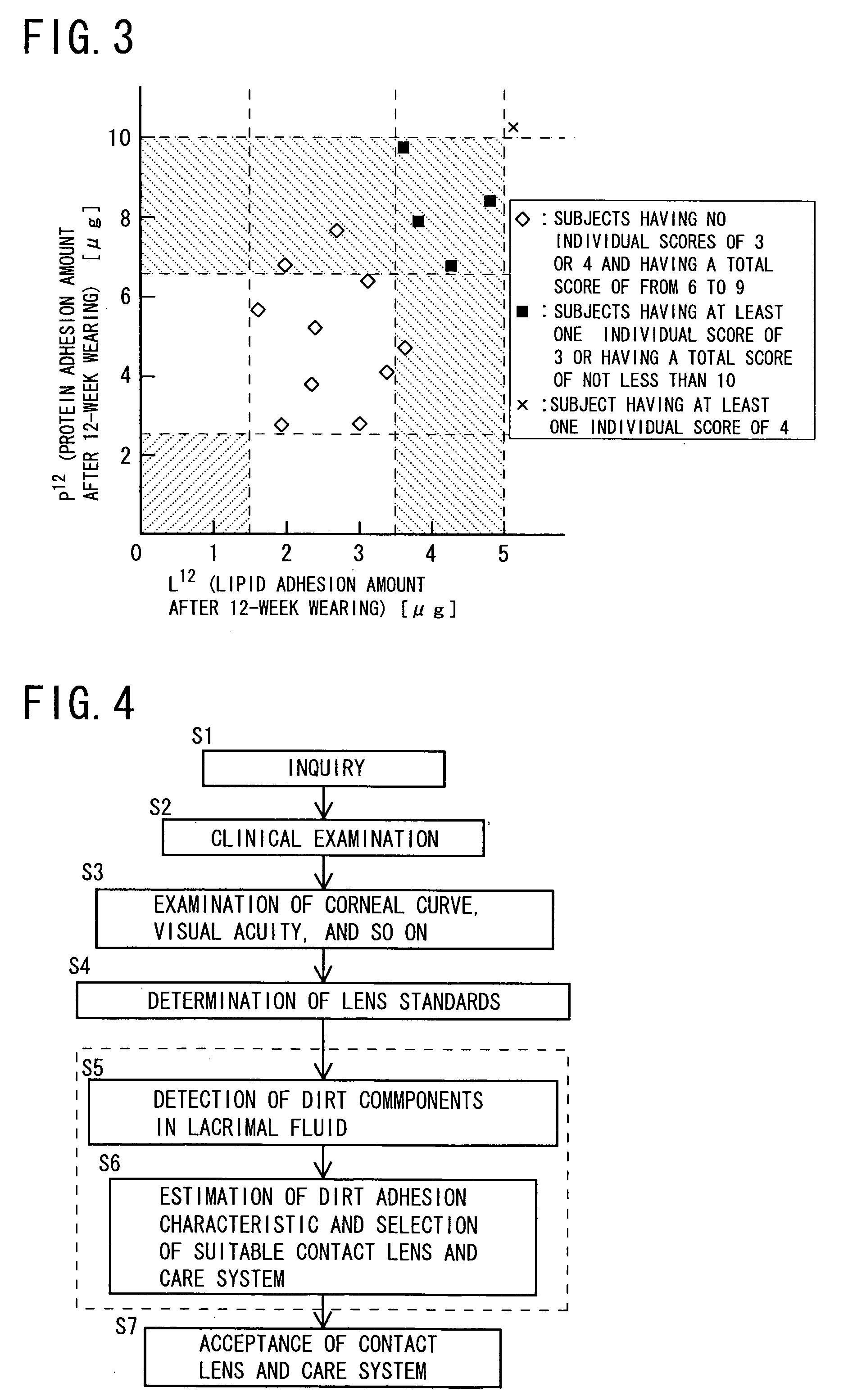Method of selecting contact lens and/or care system therefor
a technology of contact lens and care system, which is applied in the direction of instruments, cleaning using liquids, spectacles/goggles, etc., can solve the problems shortening the life of the lens, and lowering the visual acuity, so as to shorten the lens life and improve the feel of wearing. , the effect of lowering the oxygen permeability of the lens
- Summary
- Abstract
- Description
- Claims
- Application Information
AI Technical Summary
Benefits of technology
Problems solved by technology
Method used
Image
Examples
Embodiment Construction
[0020] Hereinafter, there will be described in detail an embodiment of the present invention by reference to the drawings, for the purpose of elucidating the principles of the present invention.
[0021]FIG. 1 shows a plurality of contact lenses and a plurality of care systems that are generally kept in stock by an oculist's office, a contact-lens shop, etc. The contact lenses are classified into a plurality of sorts (i.e., lenses A, B, C, and D shown in FIG. 1), and the care systems (i.e., CS-1, CS-2, CS-3, and CS-4 shown in FIG. 1) have different cleaning effects or sterilizing effects. When a certain contact lens is selected from the plural sorts of contact lenses, a care system is selected from the plural care systems, so as to be used to care the selected lens. Contact lenses may be classified by commercial products. Since, however, respective materials of contact lenses largely influence respective degrees to which the lenses become dirty, it is preferred that the lenses be clas...
PUM
| Property | Measurement | Unit |
|---|---|---|
| adhesion | aaaaa | aaaaa |
| colorimetric analysis | aaaaa | aaaaa |
| time | aaaaa | aaaaa |
Abstract
Description
Claims
Application Information
 Login to View More
Login to View More - R&D
- Intellectual Property
- Life Sciences
- Materials
- Tech Scout
- Unparalleled Data Quality
- Higher Quality Content
- 60% Fewer Hallucinations
Browse by: Latest US Patents, China's latest patents, Technical Efficacy Thesaurus, Application Domain, Technology Topic, Popular Technical Reports.
© 2025 PatSnap. All rights reserved.Legal|Privacy policy|Modern Slavery Act Transparency Statement|Sitemap|About US| Contact US: help@patsnap.com



